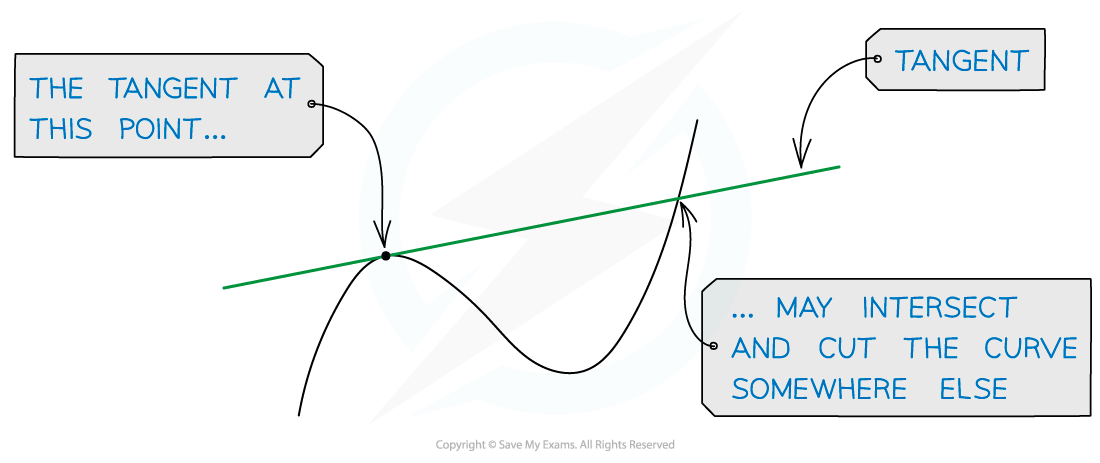Derivatives & Tangents (College Board AP® Calculus AB): Study Guide
Derivatives and tangents
What is the derivative of a function?
The derivative of a function describes the instantaneous rate of change of a function at any given point
It is equal to the slope of the curve at that point
The derivative of the function
is defined by
This is only valid for values of x where this limit exists
Note that the derivative is also a function of x
There are several ways to denote the derivative of
You may also see "the derivative of ..." written as " ... differentiated"
They mean the same thing
How are derivatives and tangents related?
The value of the derivative of a function at a point is equal to the slope of the tangent to the graph at that point
A tangent to a curve is a line that just touches the curve at one point but doesn't cut it at or near that point
However it may cut the curve somewhere else


How do I find the equation of a tangent to a curve using a derivative?
To find the equation of a tangent line to the graph of a function
at the point
using a derivative:
Represent the equation of the tangent using the general form for the equation of a straight line with slope
that goes through point
Substitute in
as the point
This is the point the tangent touches on the curve
Find the value of the derivative of
at the point
if it is not given; this is
The value of the derivative of
at
is equal to the slope of the tangent at
Substitute in
as the value of
in the equation of the tangent
The equation of the tangent will be of the form
This equation can then be rearranged to another desired form if needed
For example,
When will tangent lines be horizontal or vertical?
The tangent line to the graph of a function
will be horizontal when
Horizontal lines have a slope of zero
The tangent line to the graph of a function
will be vertical when
is undefined because of dividing a constant by zero
E.g.
with derivative
, which is undefined, even though
is defined at
Therefore the graph of
has a vertical tangent at
But be careful, as there are other reasons a derivative might not be defined at a point
E.g. the derivative of
is undefined at
, because the left- and right-hand limits defining the derivative at that point are not equal
The graph of
does not have a vertical tangent (or any tangent) at that point
Also don't confuse vertical tangents with vertical asymptotes
Tangents and curves intersect, but curves only approach asymptotes without ever intersecting with them
E.g.
has a vertical asymptote at
But the function is not defined when
, so it has no tangent at that point
Worked Example
Let the function be defined by
. It is known that at the point where
, the instantaneous rate of change of
is 5.
Find the equation of the line that is tangent to the graph of at the point where
.
Answer:
The tangent is a straight line of the form
The question states that the instantaneous rate of change (the slope) of the curve when , is 5
This means the slope of the tangent, , will also be 5 at this point
The -coordinate of the point is known, but not the
value
Find the value by substituting
into
So the point where the tangent touches the curve is
Substitute the point, and the slope at this point, into the equation of the tangent
Simplify
or

Unlock more, it's free!
Did this page help you?